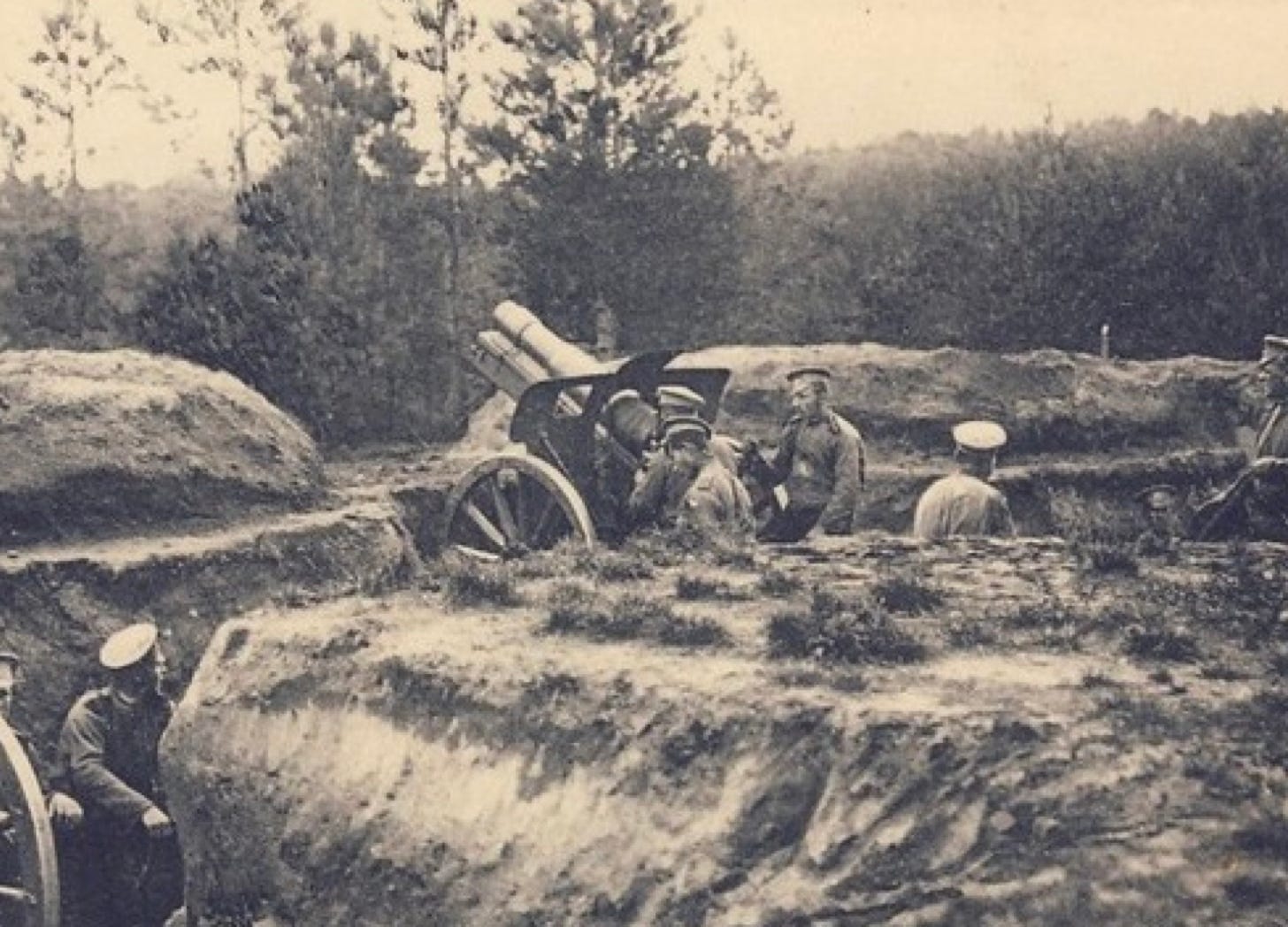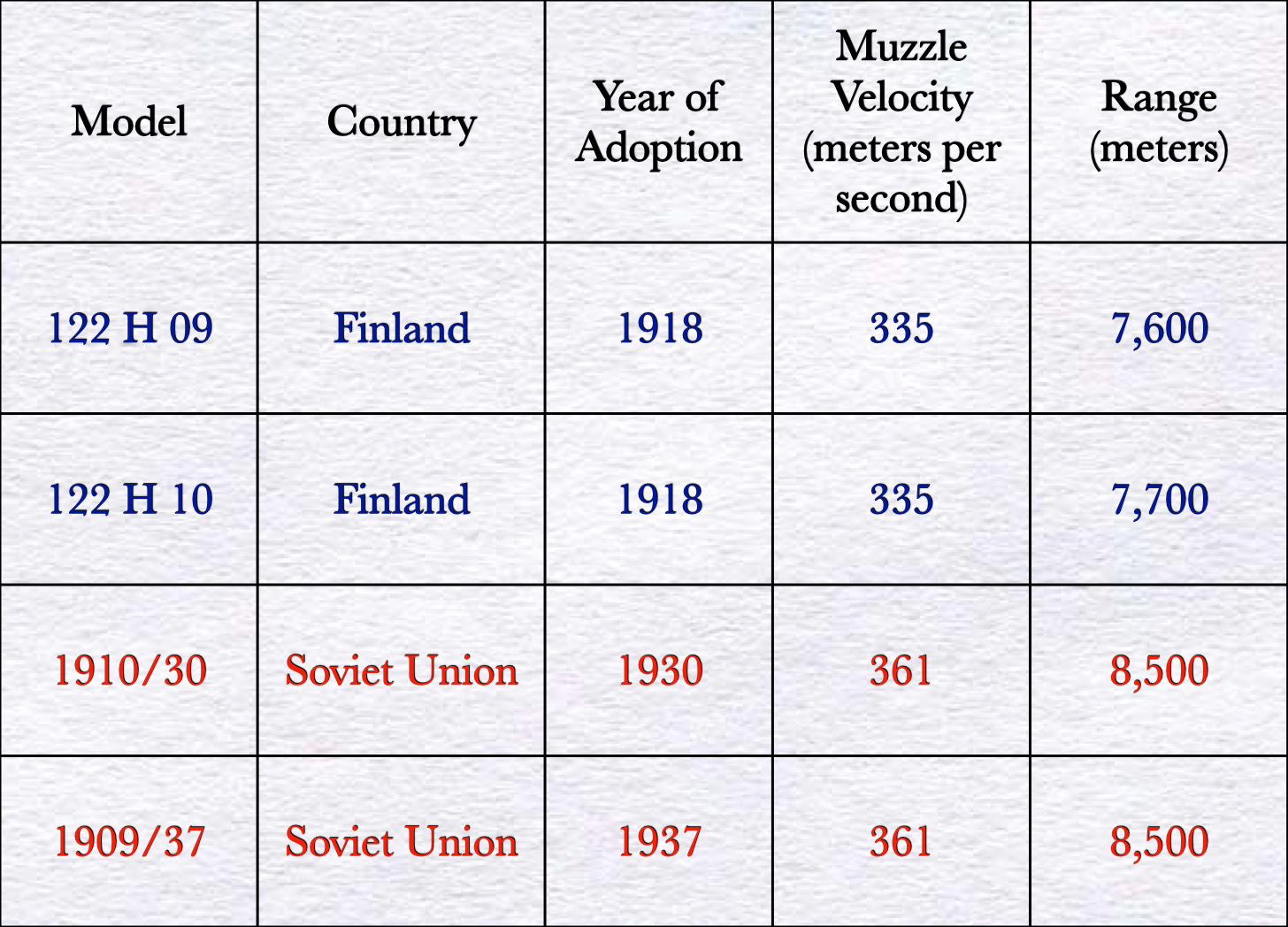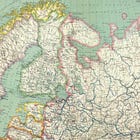Whether light field howitzers, mountain guns, or field guns, the most common field pieces employed by the Finnish Army in the Winter War of 1939-1940 had all been designed for the Imperial Russian Army in the years leading up to the First World War. The Soviet counterparts of these weapons, which had been built (or modified) in the 1930s, descended directly from the same set of weapons. Indeed, as the changes made by Soviet armorers served chiefly to increase the ability of the older weapons to reach distant targets, they might well be characterized as extended-range versions of their Finnish counterparts.
The 122mm light field howitzers adopted by the Imperial Russian Army in 1909 and 1910 changed least in the course of modernization. Designed by the leading steel-makers on the European continent, these sturdy shell-tossers enjoyed an enviable degree of expansibility.1 In particular, the Soviet engineers working on this effort discovered that they could both lengthen the chambers of these weapons and fill the newly-won space with additional propellant without undue increase in the risk of mishap.
The larger charges increased the recoil forces generated in the course of firing. Thus, the Soviet ordnance updaters reinforced the carriages, recoil-absorbing mechanisms, and elevating devices of the two types of howitzers. In addition to this, they provided the weapons with sights better suited to firing at longer ranges than the original optics.
The Soviet modernization program began, in 1930 or so, with the modification of the existing stock of howitzers of the model approved in 1910. Once this was accomplished (which seems to have happened in 1936 or so), the gun foundry at Perm began the manufacture of several thousand close copies of the modified pieces. Soon thereafter, the same factory began to program to update the inventory of light field howitzers of the type standardized in 1909.2
While this was going on, the Finnish Army made minor changes to the weapons that they called 122 H/10 and 122 H/09. In particular, it replaced sights that used old Russian units of distance, such as inches, feet, and fathoms, with aiming devices that employed metric measurements.
Sources: While I consulted a wide variety of sources in the course of writing this little article, I relied upon those provided the page on the Jaeger Platoon website dedicated to Russian, Finnish, and Soviet light field howitzers.
For Further Reading:
While French firm of Schneider and Company designed the 122mm howitzer of 1910, the German Krupp concern developed the model adopted in 1909.
Over the years, commentators have given a number of interesting reasons the near-simultaneous adoption of two different models of light field howitzer. The most interesting of these involved financial jiggery-pokery on the part of the mistress of a grand duke. The most pedestrian presumes a desire on the part of the Russian government to avoid over-dependence upon either one of the leading armaments firms of Edwardian Europe.







